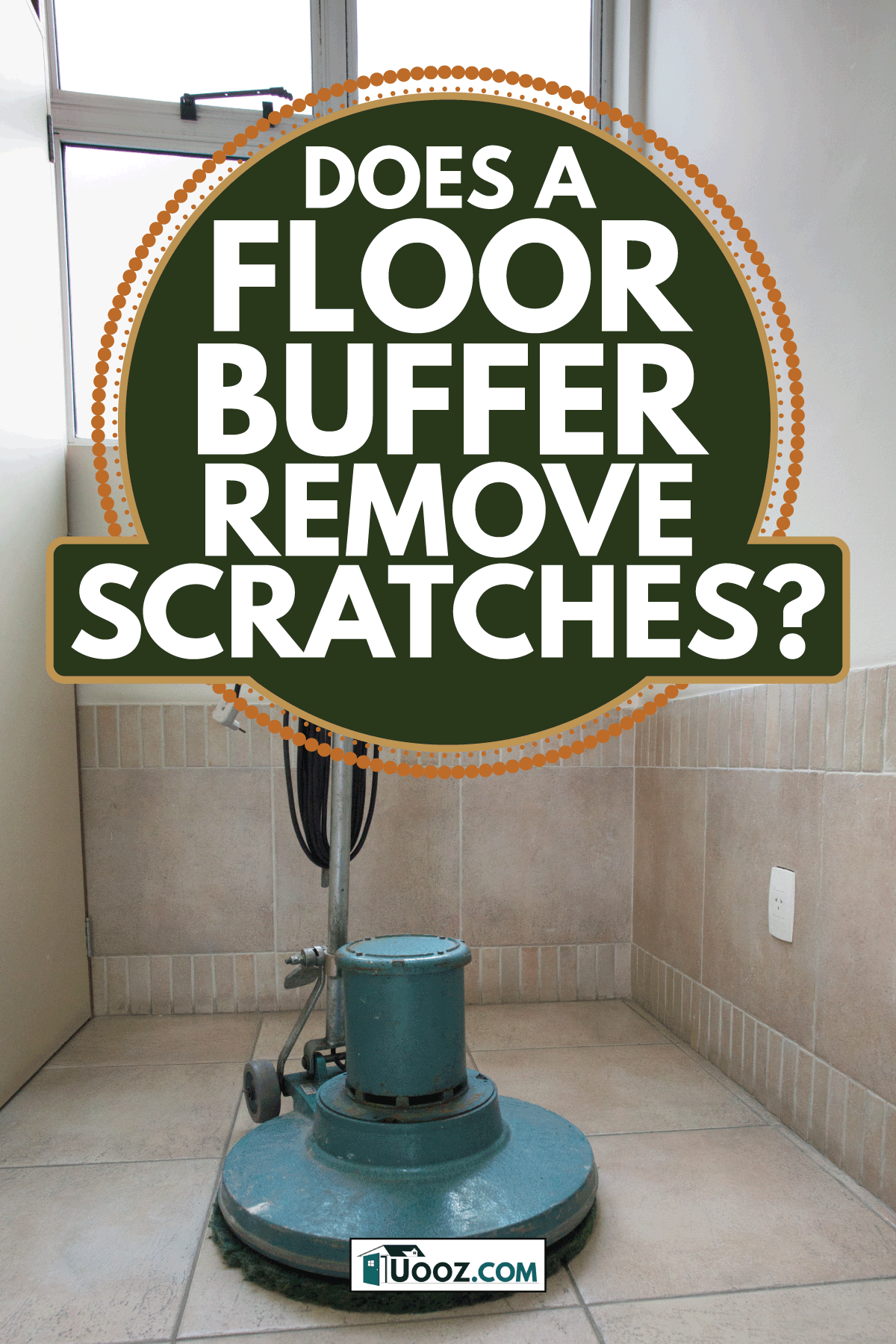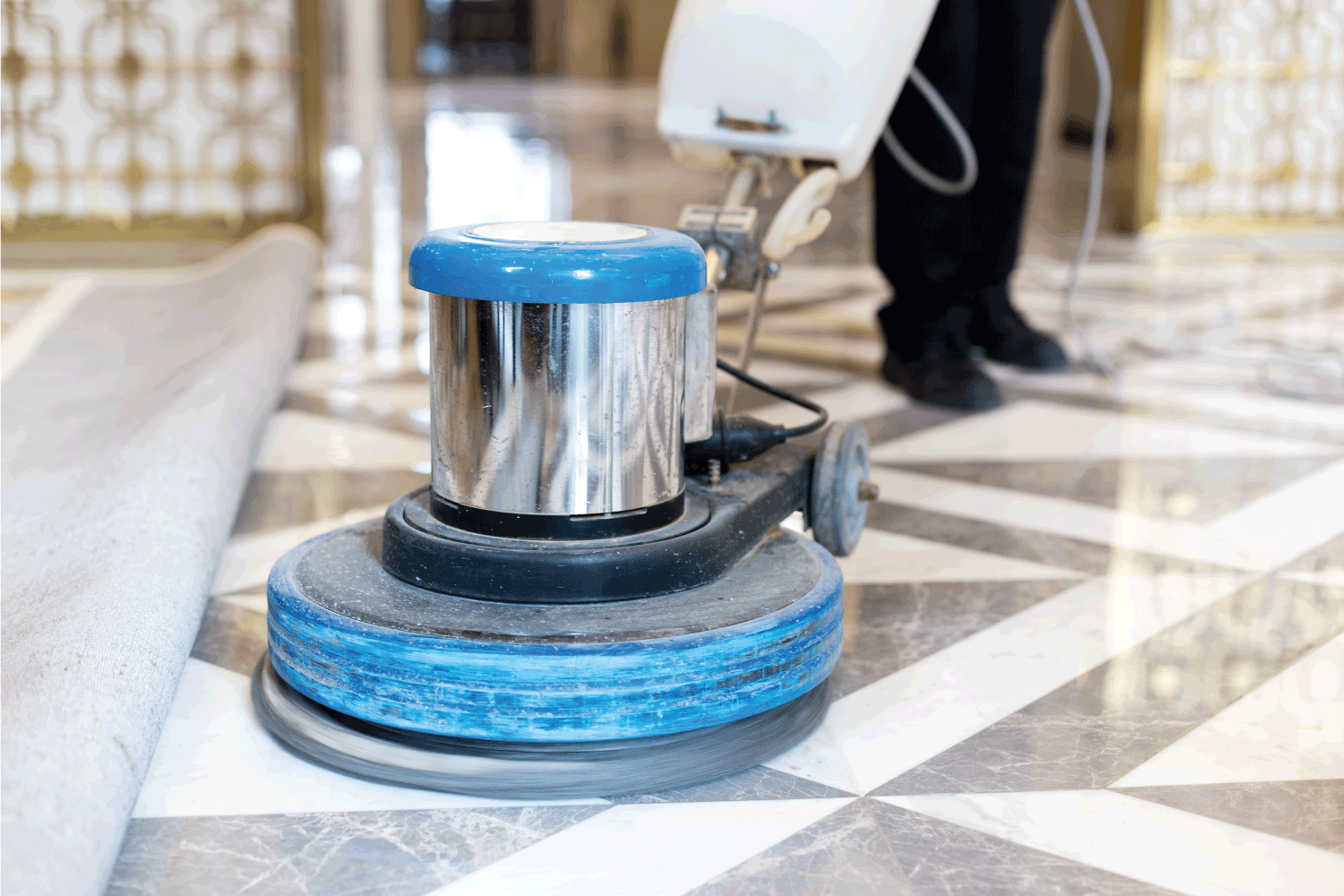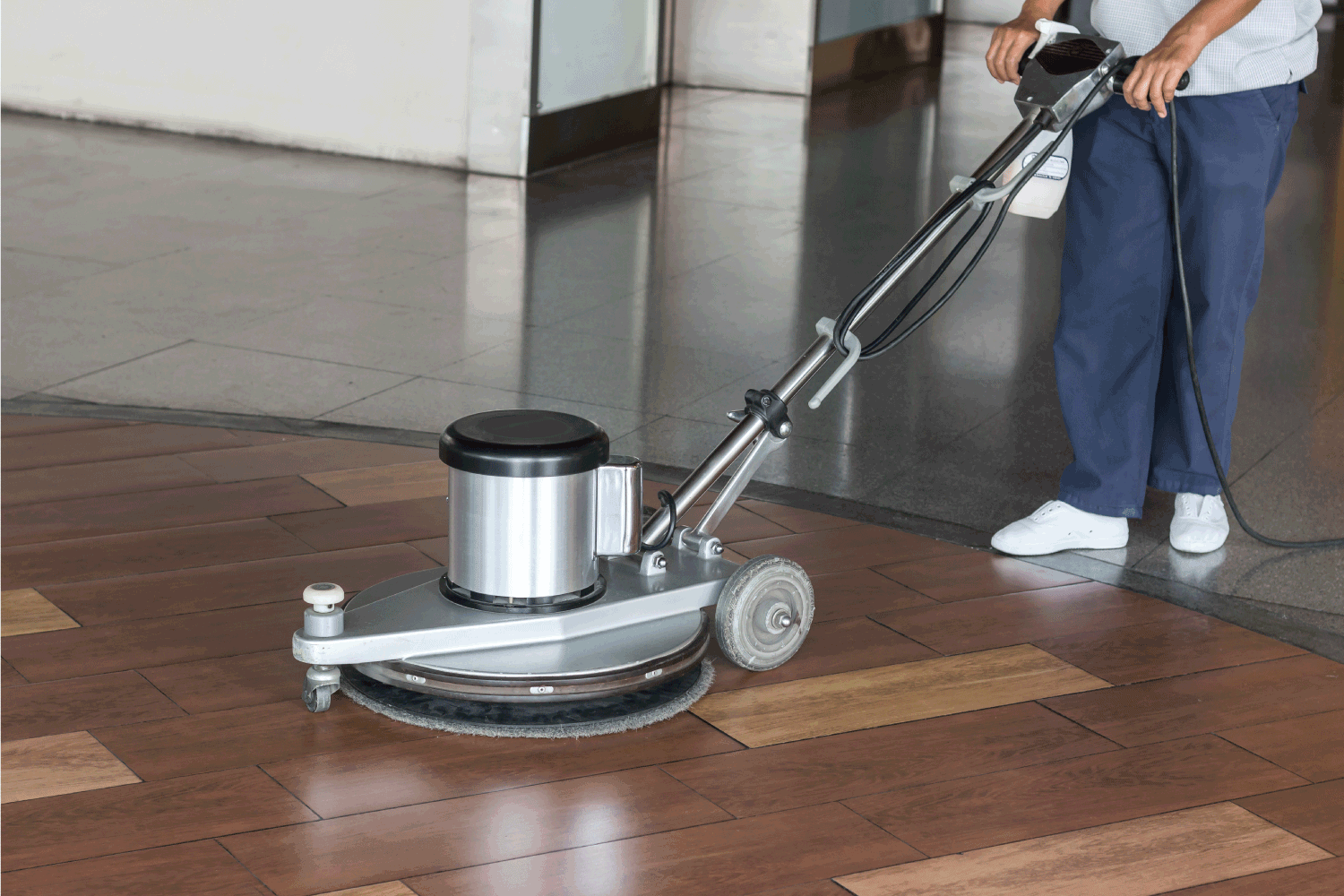No matter what kind of hard floor material you have, there will likely be a few scratches sooner or later. Everything from daily foot traffic to rearranging your furniture can cause noticeable damage. And unless you plan on refinishing your entire floor, you may just want to buff out those pesky surface scratches. We have thoroughly researched if a floor buffing machine is the right choice to remove scratches.
A floor buffer machine can remove surface scratches on certain floors. Floor buffers are a versatile tool and aren’t just limited to hardwood floors. However, they might be too powerful and heavy for some materials. Also, floor buffers cannot be used to remove scratches that are too deep. This is because buffing only levels out the damaged area and cannot hide large crevices.
If your floor has minor scratches and scuffs, then floor buffers can be a useful solution. But floor buffers can also be expensive and difficult to use. If you plan on using a floor buffing machine yourself, it’s important to know how it works. Keep reading to learn what floor buffers are used for and what floors they are compatible with.

What is the difference between buffing and polishing a floor?
Oftentimes, the terms buffing and polishing are used interchangeably in casual conversation. It doesn’t help that floor buffers can be used for a variety of purposes. With the right attachments, a floor buffer can even clean carpets instead of hard floors. Generally, buffing and polishing are both essentially the same. They are both used to describe the process of smoothing out a surface by scrubbing it.
Click here to find this hardwood floor polish on Amazon.
However, there might still be a difference between buffing and polishing. Polishing your floor might refer to the application of floor polish. Although floor polish is sometimes mistaken for floor wax, floor polish is actually a synthetic material. Meanwhile, floor wax is a natural substance. Both substances create a shine on your floor.
Otherwise, buffing and polishing can also differ based on the field being discussed. For example, a wheel is used in the fabrication of stainless steel. Buffing can refer to the use of a loose abrasive with the wheel, while polishing refers to an abrasive that is secured to the wheel.
Outside of specific fields, buffing generally refers to a rougher level of coarseness. Polishing can refer to a finer level of coarseness. But to polish something is to create a shine, which may also refer to burnishing. Burnishing is a specific term reserved for high-speed buffing. The faster rotations will create enough friction to produce that signature shine on wooden floors.
What do you use a floor buffer for?
Click here to find this floor buffer on Amazon.
The floor buffer machine uses rotary brushes to scrub a flat floor at speeds that would be impossible by hand. As such, a floor buffer is primarily used to remove small scratches, scrapes, and dings on hard floors. It does so by leveling out the area around any damage, smoothing it out with an abrasive.
You can also use scrubbing for other purposes. For example, a floor buffer can also be used to simply clean an area. The unique brushes are able to remove dirt and other residues that would otherwise remain stuck.
You can also use different bonnets with a floor buffer. The bonnet is the circular pad that the machine uses for scrubbing. Because you can replace this, the proper bonnet attachment can allow you to clean other floors, like dirty carpets.
Click here to see this set of carpet bonnet pads for Oreck Orbiter (ORB300, 400 series) on Amazon.
A floor buffer is also powerful enough to push beyond the elimination of dirt. A floor buffer can strip hard floors. Stripping a floor means that you are also removing all of the old wax or finish on the hard floor. This is an important step in completely refinishing a hard floor. So, a floor buffer is absolutely necessary for total refinishing.
Can you use a buffer on vinyl floors?
Vinyl floors are widely known as LVT or LVP. These are acronyms, meaning luxury vinyl tile or luxury vinyl plank. Using a floor buffer on vinyl floors might be a gamble. Some floor buffers may be designed for multiple surfaces, but vinyl can be difficult to work with. You can read this post to learn if vinyl flooring needs padding.
Vinyl flooring is an unnatural material, which is only made to resemble actual hardwood. Vinyl is actually made of PVC, combined with a few other substances. Because of this, the material is generally inexpensive, making it a popular alternative to wood floors. Vinyl is also known to be quite durable and can maintain its shine for a long time.
Be Cautious of Vinyl's Wear Layer
However, vinyl floors are coated with a wear layer. This is what actually bears all of the damage, stains, and other grime. This is where the floor buffer can become a problem.
If the floor buffer isn’t using the correct bonnet or the correct speed, it can destroy the vinyl floor’s wear layer. If you’re a little too rough, the floor buffer can penetrate and separate the wear layer from the base material. That would create serious issues. Only a low speed floor buffer may be able to buff a vinyl floor.
Vinyl flooring cannot be repaired or refinished and must be replaced instead. Unfortunately, vinyl floors are also notoriously difficult to remove. This means that you’ll need to take very good care of vinyl, and you absolutely cannot burnish it. For minor scuffs, you can still buff the damage out by hand. Some people suggest DIY solutions that include everything from car wax to apple cider.
Can you use a buffer on tile?

Tile flooring is usually made from ceramic material, which has been molded and heated. Porcelain tile floors are also made of ceramic. However, porcelain tiles also include feldspar crystal in the mixture. Natural stone tiles are also available, though you likely aren’t looking to buff that in your living room.
It’s likely that your tiles are made of porcelain, which is especially popular for its durability and stylish look. Porcelain tiles are also easy to clean. This is why they are commonly used for your kitchen or bathroom. You can check out this post to learn about the six best types of tiles for kitchen floors.
Click here to find this tile glaze on Amazon.
Be Cautious of Glazed Tiles' Finish
Again, some floor buffers do offer polishing pads that are specifically designed for tile floors. And at low speeds, this may actually work. However, some tile is glazed to create more shine. This glaze layer is easily cracked by floor buffers, which are simply too clunky and powerful.
It’s always safest to buff out tile floors by hand. Sometimes, a simple sponge will do. But you can even apply the buffing solution by scrubbing with the machine’s buffing pad yourself.
Can you buff polyurethane wood floors?

Polyurethane isn’t actually a type of wooden floor. Polyurethane is a popular finish for hardwood floors. It can be stylish, water-resistant, and UV resistant. Polyurethane is also famously durable and available in a variety of sheen levels. It can even be purchased for either interior or exterior purposes.
Click here to see this oil-modified polyurethane on Amazon.
You can use either oil-modified or water-based polyurethane. Oil-modified polyurethane is cheaper and stronger, but it emits fumes and might change the color of your wood. Water-based polyurethane is more expensive and weaker but remains clear and dries faster.
Fortunately, it is possible to use a floor buffer on either of these substances. However, it is often suggested that you sand down the polyurethane beforehand. Polyurethane is a tough, resilient material that can withstand a floor buffing machine.
How can I buff my floor without a machine?
A floor buffing machine may be too powerful for the floor you plan on buffing. A floor buffer may also seem too expensive or difficult to use. Fortunately, there are always methods of buffing your floor by hand. But keep in mind that the buffing process will always demand that you consistently clean and wash the floor.
Firstly, you can use any preferred commercial cleaner or buffing substance. There are a variety of brands available online. What you really need to pay attention to is the scrubbing material.
You can purchase polishing or buffing pads, which are designed for the buffing machine. Even by hand, these can still be effective. Further, you can be certain the scrubbing material will be uniquely ideal for whatever your floor is made of.
Click here to find this steel wool on Amazon.
Other methods usually involve some kind of wool. The best wool to use is either brass wool or steel wool. Naturally, steel wool is much rougher. So, different floors may call for one option over the other. Scrubbing in the same direction as the grain on the floor can help buff out small scrapes and damage.
Summary
The floor buffer may be a powerful tool, but that strength also comes with certain dangers. While many are marketed for all surfaces, it may not always be the right solution. Now that you know what a floor buffer is compatible with, minor scratches won’t stand a chance. Best of all, you won’t have to refinish your entire floor!







Polyurethane wood floors require high maintenance and they are expensive too. Your article is full of important topics like you have described how to be cautious while cleaning Glazed tiles, different Hard floor buffer and polisher are in the market for different types of floors. AS you mentioned buffer doesn’t remove deep scratches on the floor for this we have to polish for make it more shiny.